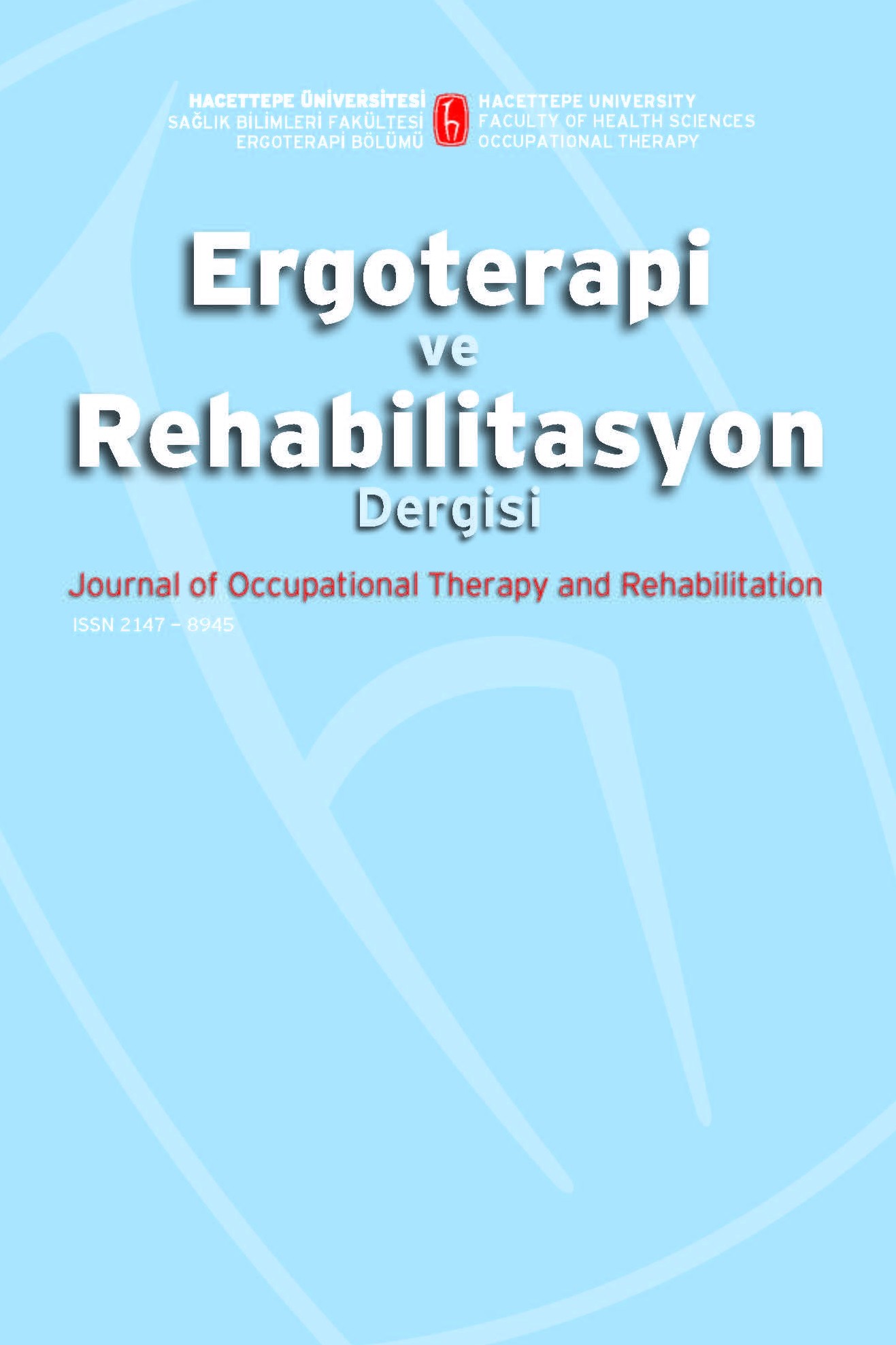Üniversite öğrencilerinde masaüstü bilgisayar kullanımının boyun ağrısına olan etkisinin incelenmesi
Amaç: Bu çalışma masaüstü bilgisayar kullanan üniversite öğrencilerinde fiziksel özelliklerin ve bilgisayar kullanımı sırasındaki postür, bilgisayar monitörünün ve klavyesinin yerleşimi ile bilgisayar kullanım süresinin boyun ağrısına etkisini incelemek amacıyla planlandı. Gereç ve yöntem: Çalışmaya yaş ortalaması 22.1±2.1 yıl olan 201 (94 kız, 107 erkek) üniversite öğrencisi dahil edildi. Öğrencilerin fiziksel özellikleri, ve bilgisayar kullanımı sırasındaki pozisyonları değerlendirmek için “Bilgisayar Kullanıcılarında Kas İskelet Hastalıkları Sıklığı ve Risk Etmenleri Tarama Formu” nun “Bilgisayar Kullanma Pozisyonunun” değerlendirildiği beşinci bölümden üç pozisyon ve bilgisayar kullanım süreleri için günlük (saat/gün) ve toplam (yıl) süreler kaydedildi. Sonuçlar: Öğrencilerin % 55.7 (n=112)’sinin bilgisayar kullanımına bağlı boyun ağrısı vardı. Bilgisayar kullanımı sırasında boyun ağrısı açısından uygun olmayan postürler ve kız öğrenci olmak istatistiksel olarak anlamlı fark yaratırken (p<0.05), bilgisayar kullanım süresinin boyun ağrısı üzerine anlamlı fark oluşturmadığı bulundu (p>0.05). Tartışma: Üniversite öğrencilerinde masaüstü bilgisayar kullanımı süresince boyun ve sırt bölgesinde fleksiyon postürünü daha çok tercih ettikleri ve boyun bölgesinde ağrılarının olduğu görüldü. Bilgisayar kullanımı sırasında postüral düzgünlüğü sağlayacak ergonomik düzenleme ile kas iskelet sisteminde gelişen rahatsızlıklarının azaltılabileceği düşüncesindeyiz
Anahtar Kelimeler:
Boyun ağrısı, Öğrenciler, Bilgisayarlar, Postür
Investigation of Effect of Using Desktop Computers on Neck Pain in University Students
Purpose: This study was designed to investigate the effect of physical characteristics, posture, position of monitor and keyboard and computer using duration on neck pain of university students using desktop computers. Material and Methods: The study included 201 university students (94 females, 107 males) with an average age of 22.1±2.1years. To evaluate the physical characteristics of the students and positions while using computer, the ‘Computer Use Position’ from the fifth part of the ‘Scanning Form for the Prevalence and Risk Factors in Computer Users’ was used to record three positions and computer usage duration as daily (hours/day) and total (years). Results: Neck pain due to computer use was determined in 55.7 % (n=112) of the students. In respect of neck pain during computer use, incorrect posture and female gender created a statistically significant difference (p<0.05). No statistically significant difference was found related to neck pain in terms of duration of computer usage (p>0.05). conclusion: From the results of the study, it was seen that the university students preferred a posture with the neck and upper back in flexion which caused pain in the neck area. Ergonomic improvement would improve postural alignment during computer use and decrease the problems which develop in the musculoskeletal system
- ISSN: 2147-8945
- Yayın Aralığı: Yılda 3 Sayı
- Başlangıç: 2013
- Yayıncı: Hacettepe Üniversitesi Sağlık Bilimleri Fakültesi
Sayıdaki Diğer Makaleler
İş Ortamını Yeniden Düzenlemenin İş Verimliliğine Etkileri
Parkinson Hastalarında Duyu Bütünlüğü Eğitiminin Postüral İnstabiliteye Etkisi
Ayla FİL, Kadriye ARMUTLU, Songül AKSOY, Hülya KAYIHAN, Bülent ELİBOL
Üniversite öğrencilerinde masaüstü bilgisayar kullanımının boyun ağrısına olan etkisinin incelenmesi
Nesrin YAĞCI, Bilge Başakci ÇALIK
Esra AKI, Nurettin TANRIVERDİ, Yasir ŞAFAK
Üniversite öğrencilerinde masaüstü bilgisayar kullanımının boyun ağrısına olan etkisinin incelenmesi
